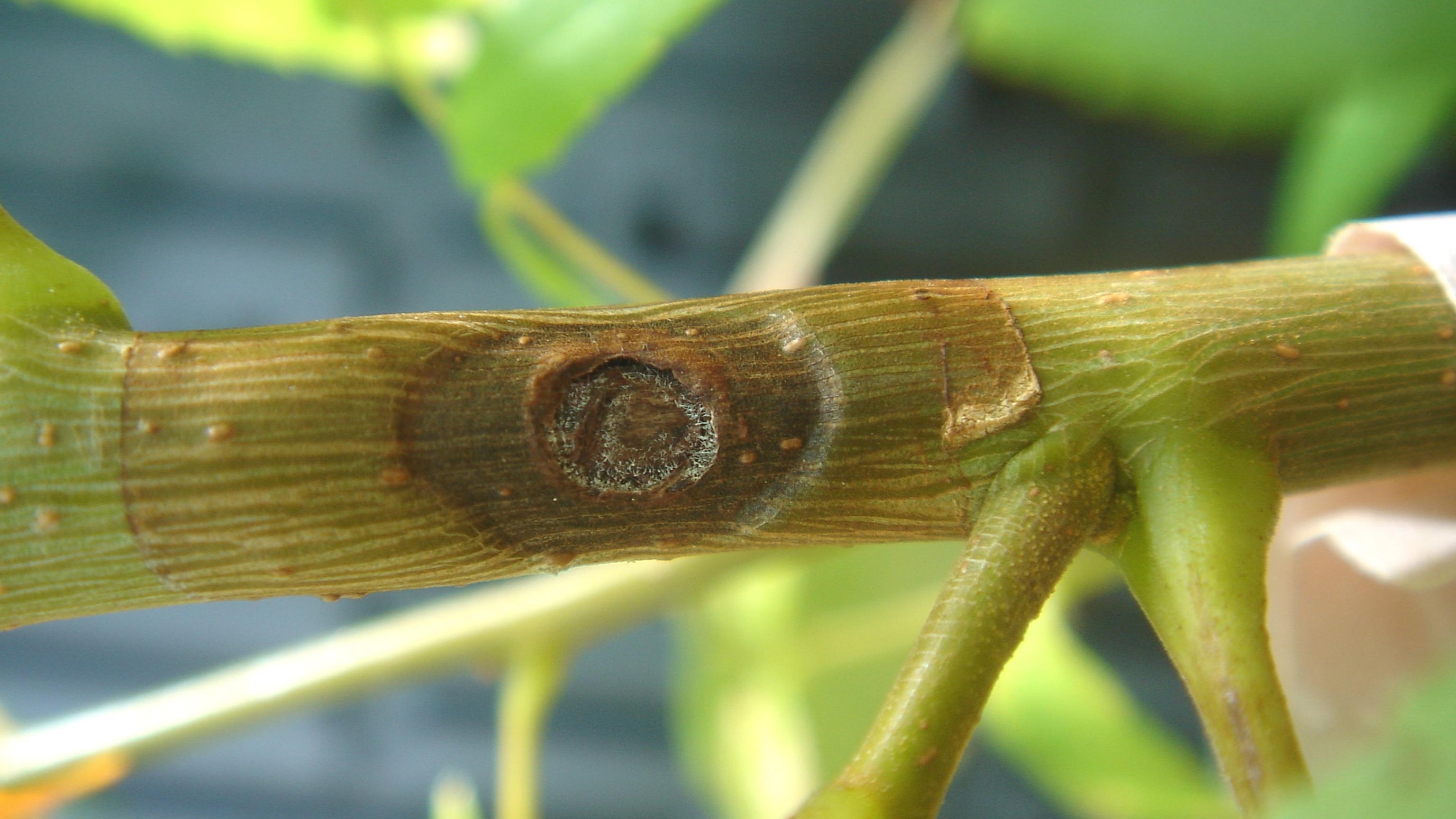Thousand Cankers Disease

Canker on a Southern California walnut seedling. Curtis Utley, CSUE, Bugwood.org
Thousand cankers disease (TCD) ravages black walnut trees, which are recognized as some of the rarest, most valuable hardwoods in North America. The disease is caused by a harmful fungus (Geosmithia morbida) spread by walnut twig beetles (Pityophthorus juglandis).
As they gnaw into trees to feed and reproduce, small, cankerous-looking wounds develop on branches and trunks. Cankers swell as the disease progresses, disrupting plant tissue and eventually killing the inner bark of affected branches and stems. TCD was identified in 2003, and since then, has decimated millions of black walnut trees in California, Oregon, Washington, Idaho, Utah, Arizona, New Mexico, and Colorado.
There are three major symptoms that indicate a black walnut tree has TCD. Here's what to look for:
- Dead branches
- The earliest symptom is yellowing foliage that progresses rapidly to brown wilted foliage, then finally to branch mortality.
- Small cankers
- The harmful fungus causes distinctive circular to oblong cankers on the outer tree bark, which eventually kill plant tissue. The surface of the bark may have no symptoms, or a dark amber stain or cracking of the bark may occur directly above a canker.
- Bark beetles
- Tiny entrance and exit holes may be visible on dead and dying branches. Bark beetle galleries, patterns left by the insects, are often found in multiple layers within the cankers in the vascular tissue. In the final stages of disease, even the main stem may exhibit beetle attacks and cankers.
Report Plant Pests and Diseases
Have you seen this pest or signs of pest damage? Immediately report your findings.
Find your State plant regulatory official
Find your State plant health director
Controlling Thousand Cankers Disease
APHIS' Response
There isn't a Federal regulation in place for TCD. In 2010, APHIS reviewed the geographic distribution of the known TCD-affected areas, considered its potential to spread across the nation, and assessed the effectiveness of a regulatory framework. The conclusion: Federal regulations would have a minimal long-term impact on the spread of TCD because of poor detection capability, challenges regulating the long-distance movement of products and shippers, and the broad geographic distribution of TCD in the United States.
To address some of the known TCD pathways, APHIS has implemented requirements for importing solid wood packaging and propagative material. APHIS also has other ongoing efforts to mitigate forest pest threats from the interstate movement of firewood, which is another pathway for the spread of TCD. In addition, several States have set up exterior quarantines.

